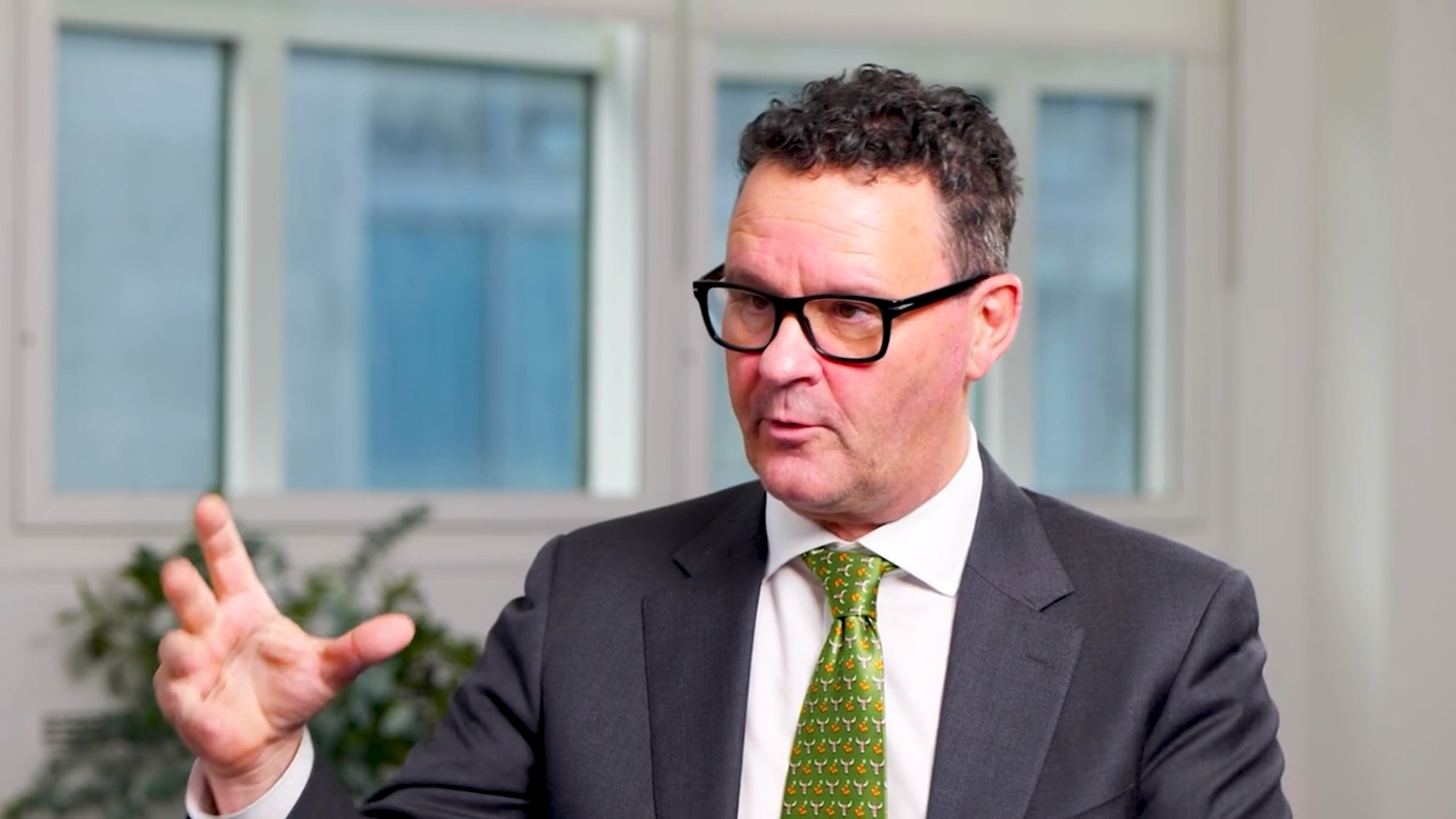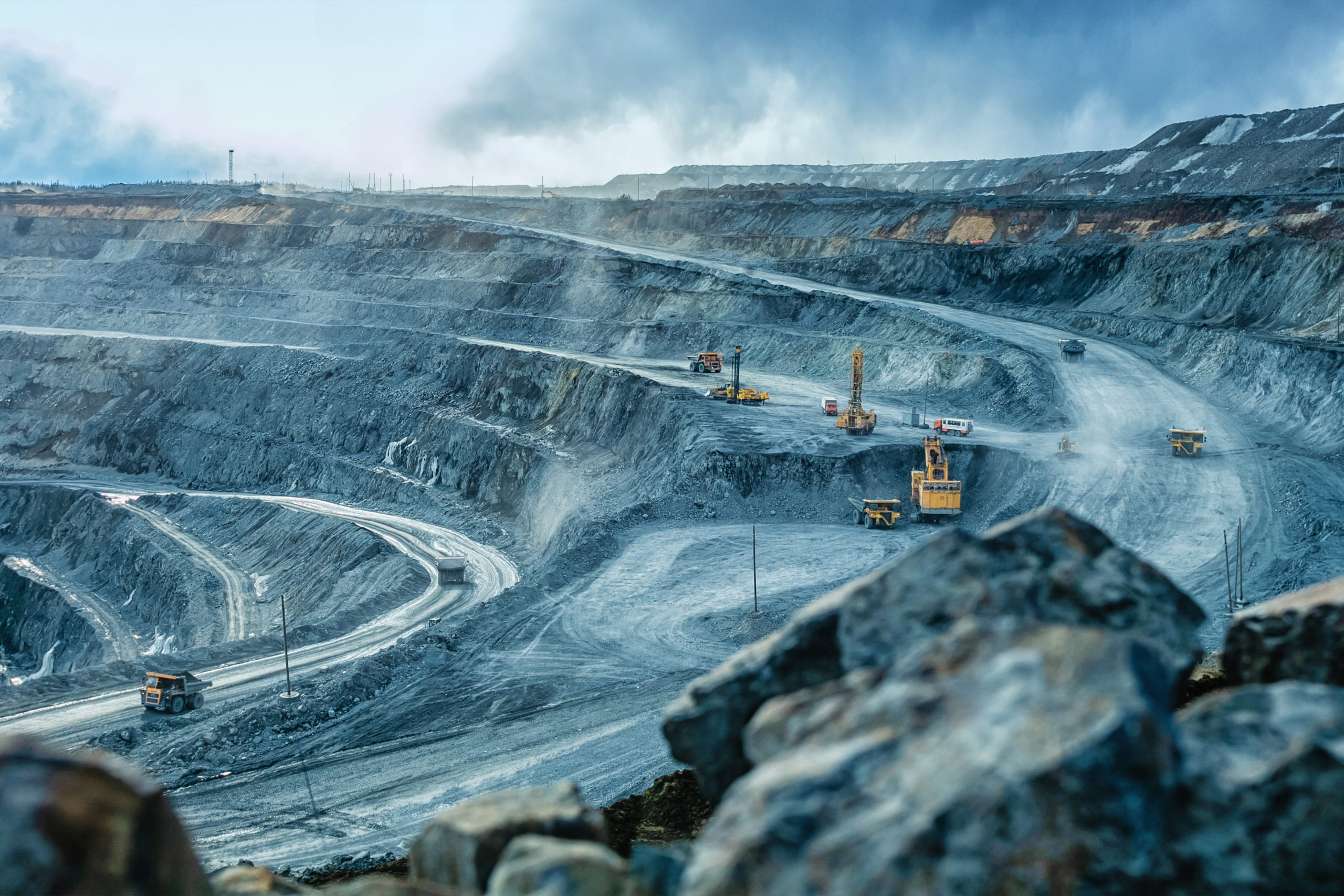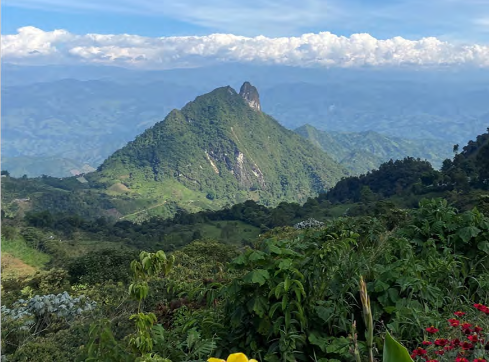Using tailings to get to net zero

Peter Scheuermann conducts a carbon mineralization field experiment using material from the Baptiste deposit. Credit: Bethany Ladd/UBC.
Over the last two years, a wave of miners, one after the other – has declared their intentions to become carbon neutral over the next 30, 20 or even 10 years.
How they plan to get there involves multiple avenues – replacing diesel at their operations, incorporating renewable energy, and moving less material.
And for some miners, something that’s previously been seen as a liability – tailings – could play a part in helping them achieve net zero carbon emissions through the process of carbon mineralization.
Specifically, tailings of ultramafic hosted deposits – nickel, diamonds or PGEs – have the potential to absorb a significant amount of CO2, says Greg Dipple, a professor and researcher at the University of British Columbia who’s been researching carbon mineralization for 20 years.
“For some deposits, it won’t make a difference at all,” Dipple says. “But for others, it’s technically easily feasible to have mines that are operating net negative in terms of CO2 emissions.”
With a team at his lab, CarbMin Lab, Dipple is currently working with diamond miner De Beers – which last year announced an ambitious carbon neutrality target for its operations of 2030 (Scope 1 and 2 emissions) – and two juniors advancing nickel deposits they plan to be carbon neutral (FPX Nickel and Giga Metals).
The best part, given the enormity and urgency of the climate problem, is that the measures that Dipple is investigating are simple and inexpensive interventions that could be implemented in the near-term.
While carbon mineralization will only be one piece of the puzzle for miners on their path to decarbonization, Dipple says, it could have a significant impact on climate change – especially combined with other efforts.
“In terms of global impacts, you’re probably looking at something that would be in the tens to perhaps 100 million tonnes CO2 per year,” Dipple says. “That’s a relatively small part of the overall problem, which is more like 40 billion tonnes per year – but nobody’s doing 100 million tonnes right now.”
How it works
Carbon mineralization is a natural process whereby rocks react with CO2 and convert it into rock, where it can be stored in a safe and stable form for thousands of years. Ultramafic rocks can contain highly reactive minerals that have strong potential for carbon mineralization. The mining process strongly enhances that potential by breaking up the rock.
“The overall process is a natural process of weathering, but it happens much much faster in mine waste because the rocks have been finely crushed and the surface area is much higher, Dipple says.
In fact, Dipple’s past work at BHP Billiton’s Mt. Keith nickel mine in Western Australia showed that mine tailings at the operation were offsetting 11% of its carbon emissions.
“We demonstrated it was doing 40,000 tonnes a year of captured mineralization in their tailings – accidentally and unknowingly at the time,” he says.
In addition to developing ways to measure the carbon mineralization process, Dipple’s work is focused on speeding up and enhancing the natural process.
“Our work looks to double or triple that rate through relatively inexpensive surface modifications like churning and managing water content.”
In the lab and last year, in the field with work funded by FPX Nickel and the federal government on material from FPX’s Baptiste nickel deposit, 90 km northwest of Fort St. James, B.C., CarbMin Lab succeeded in that goal.
The trial, conducted on 300 kg of sample material crushed to the same expected size of tailings (50-360 microns) demonstrated a rate of carbon capture of 2 grams CO2 for each kg of material when it was churned or stirred daily to a depth of 12 cm, compared to 1 gram CO2 in material that wasn’t churned.
“Our work has shown that if you just manipulate it less than 30% of their tailings – the 30% that are the most reactive, then the mine would be greenhouse gas neutral,” Dipple said. “And if you did more than that, it would have a negative greenhouse gas footprint.”
The first 24 days of the trial took place near Prince George, B.C. (with similar climate conditions to the project but away from Fort St. James and smaller communities as a pandemic precaution) and completed in Vancouver at the UBC campus. Results haven’t yet been released for the second part of the trial, but this year, tests on Baptiste material will be scaled up to a few tonnes from hundreds of kilograms.
The active mineral at Baptiste is brucite – and Martin Turenne, president and CEO of FPX Nickel says it is found throughout the deposit, so selective mining would not be necessary to access its carbon absorption benefits.
The junior has made a point of disclosing test results on Baptiste mineralization to show the fundamental science to the market.
The project is still at an early stage – a preliminary economic assessment released late last year estimated the preproduction price tag at US$1.7 billion and FPX is working on a prefeasibility that’s expected to take roughly two years.
But Turenne believes that the tailings capture and net-zero potential of Baptiste will help FPX attract financing, investors, partners or even potential acquirers.
“This project has potential for large nickel production and relatively modest CO2 footprint – or potentially net zero or net negative – I know based on conversations with those groups that it is of interest to them.”
With regulations such as the EU Sustainable Batteries legislation proposed in December by the European Commission that could see carbon footprint thresholds on the CO2 associated with production of EV batteries imposed by 2027, Turenne notes that lowering carbon emissions has become imperative for the metals industry.
“This push for low carbon metals and materials isn’t just a feel good thing,” he says. “It will impact on access to market.”
Direct injection
CarbMin Lab’s work with FPX is focused on carbon capture from air, but it’s also working with De Beers at its Gahcho Kué mine in the Northwest Territories to test the idea of taking flue gas directly from the operation’s onsite diesel power generation plant and flow it into the tailings pile.

In July 2020, Gahcho Kué mine laboratory operator Suzanne Andrews prepares a sample of processed kimberlite to be sent to UBC. Due to the Covid-19 pandemic, onsite experiments were not possible during 2020. Credit: De Beers Group
“If you’re frozen 10 months a year like in the Arctic, direct air capture systems are harder to operate,” Dipple says.
(In addition to strong climate controls, CarbMin Lab’s work so far has also shown that water is necessary to drive the reaction – but too much water can inhibit it.)
In 2019, a pilot test was completed at Gahcho Kué using 250 kg of tailings. A concentrated stream of 10% CO2 was injected into a 6-metre long tailings pipeline at a rate of about 1 litre per minute. Dipple says the pilot was successful – for 44 hours there was no detectable CO2 coming out the back end of the pipeline.
A larger-scale experiment is planned for this summer, using perforated pipes underneath the tailings to flow the CO2 through. Natural Resources Canada’s Clean Growth program contributed funding of $675,000 towards the research in 2019.
Through its CarbonVault program, De Beers is funding research into several different ways to enhance the natural capacity of kimberlite to absorb carbon, says Kirsten Hund, head of Carbon Neutrality for De Beers Group.
In addition to looking at point-source injection at Gahcho Kué, the company is also working with other universities to research how physical manipulations of processed kimberlite, different chemicals, or photosynthetic bacteria can accelerate carbon sequestration at its other mines in southern Africa.
However, carbon capture in tailings is only a small part of De Beers’ plan to become carbon neutral (Scope 1 and 2 emissions) by 2030 – a full decade before its parent company Anglo American and among the most aggressive targets in the industry.
“We definitely don’t think it will be the solution to everything, those kimberlite rocks will not be the easy way out for us – we’re going to have to do a lot to fundamentally change the way we mind and we are working very hard on that,” Hund says.
De Beers’ plan to do so has three main levers: reducing energy intensity by changing the way it mines; replacing fossil fuels (it’s investigating hydrogen powered trucks with parent Anglo American, for example, and looking at renewable power options to replace coal-generated grid power in South Africa); and natural solutions such as carbon capture and reforestation to address any remaining emissions.
“For CarbonVault we’re really in the research phase. We’ve done a lot of academic level research that shows that this works – these rocks do absorb carbon and there are very effective ways to enhance that,” Hund said. “This year, we’re really looking at the engineering solutions of how do we apply this at scale, where do we apply this at scale, how does that work in terms of needs for land, water, energy, etc.”
By the end of the year, Hund says she hopes the company – which intends to put carbon capture through tailings in place at its operations by 2030 – will be able to better quantify the potential.
Hund also stresses that carbon neutrality is part of De Beers’ broader Building Forever sustainability strategy. “We don’t see our carbon neutral target as a standalone target – we really feel it needs to be closely connected to our other social and environmental targets to make sure that those are clearly aligned.”
Global impact
Carbon capture in tailings is much less energy intensive than other methods of carbon capture, and it wouldn’t be expensive to implement systems to maximize carbon uptake in reactive tailings.
“The cost really depends on how reactive the tailings are and it can vary from $20 per tonne CO2 to $200 per tonne CO2 depending on whether you’re in a highly reactive or relatively unreactive part of the system,” Dipple says.
Future operations could use automated solutions – such as a fleet of autonomous rovers – to safely churn the tailings to maximize the reaction. The industry will also need to look at the way that tailings are treated and stored – which often limits their carbon absorption capacity.
“These tailings get buried and isolated from the atmosphere and ultimately on mine closure, they’d be all sealed up and wouldn’t be available to react,” he says. “So we are limiting the carbon sequestration capacity that is lost if we don’t take actions to take advantage of it.”
Ultimately, the big potential for tailings and carbon capture will come from future mines being designed now, like Baptiste, says Turenne.
“The engineering challenge going forward is to think about a mine operating at a very high scale – how do you engineer around a real-world tailings facility to try and maximize that CO2 exposure to the surface of the brucite,” Turenne says. “One of the advantages of having an exploration/development stage project is trying to find clever ways to do that will form part of our engineering plans and tradeoff studies so that we can build it into the project plan from Day 1.”





Comments